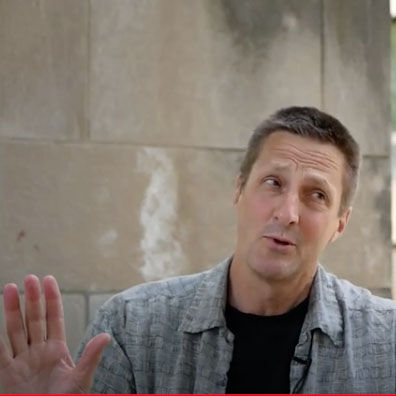Psychology
When Obedience to Authority Conflicts With Common Decency
Lessons about human nature from Milgram’s classic obedience research.
Posted March 1, 2021 Reviewed by Lybi Ma

- The best-known finding from the field of social psychology may well be Stanley Milgram’s study of obedience to authority, but textbooks barely show why it’s so profound.
- Our ancestors were more likely to survive and reproduce when they were cooperative, but participants of the Milgram study violated this important norm.
- Another important point we miss about the study: It’s rare when a respected authority figure will instruct someone to do something that is actually harmful to other people.
Can you think of a research finding that changed the way people think about human nature?
Over the last two decades, I have had the pleasure of wandering the summer streets of Vancouver, British Columbia, discussing profound ideas with Mark Schaller, a professor at the University of British Columbia, and author of a number of studies on topics ranging from altruism to xenophobia.
Schaller is a brilliant intellectual, but not someone who takes himself too seriously. For him, thinking deep thoughts is more like a recreational sport than hard work, with a good dose of irreverent humor sprinkled between the serious insights. One of the products of our long walks and frolicking conversations was a paper rebuilding the classic pyramid of human motives on an evolutionary foundation, which I’ve talked about here.
In my last post, I linked to an interview in which Schaller talked about his thought-provoking research on the links between disease, prejudice, and the emergence of societal norms.
During that same interview, I also asked Schaller to nominate a research finding that had changed the way that we think about human nature. He nominated what is perhaps the best-known finding from the field of social psychology: Stanley Milgram’s study of obedience to authority. But Schaller argued that the take-home message from Milgram’s research is not what psychologists typically tell their students. In fact, Schaller argued that the way the classic obedience research is typically presented in psychology textbooks “barely scratches the surface of why it’s such a profound finding.” (He was quick to point out that I’ve written two such textbooks, in which I also only scratched the surface).
Milgram's classic research
If you’ve ever taken a psychology course, you probably remember Milgram’s experiments. The set-up was that a real subject is led to believe he is going to be the “teacher” in a study on the effects of punishment on learning. The teacher’s job is to deliver a painful electric shock every time the learner makes a mistake, using an ominous-looking shock generator with 30 levers (under which are labels ranging from “slight shock” through “moderate shock” to “strong shock,” and then on to “very strong shock” “intense shock,” and “danger: extreme shock”). The last three shock levers simply had “XXX” written underneath. To make it real, the “teacher” was given a sample shock and asked to guess its level. It hurt, and subjects guessed it to be a strong shock, but the experiment said no, it was only number 3 of 30, down in the “slight shock” range.
The “learner” in the study was actually a confederate of the experimenter, a middle-aged man who, upon being chosen to receive the shocks, mentioned that he had a heart condition. The experimenter responded by saying that although the shocks would be painful, they would produce “no permanent tissue damage.”
The learner would next be strapped into what looked like an electric chair in the adjoining room. Once the experiment began, he made plenty of mistakes. If you were the “teacher” you’d have been instructed to give him a shock for each error and to move up to the next shock lever for the next error.
Early on, the learner started protesting. At first, he just shouted, “Ugh.” After that, “Hey, this shock really hurts!” Later, he began screaming: “Let me out here, my heart is really bothering me.” Remember he was strapped into the shock-generating chair, and (presumably) could not release himself. If the teacher asked the experimenter to check on the learner, he would simply say that the shocks produced no permanent tissue damage, and would instruct the teacher to continue up to the next shock level. If the participant continued to object, the experimenter would command: “the experiment requires that you continue.”
At some point, after a lot of screaming, the fellow with the heart condition would simply go dead silent, and not even give an answer. Instead of stopping, though, the experimenter instructed the teacher to: “Treat no response as a wrong response, and proceed to the next shock level.”
The memorable part—the part stressed in psychology textbooks—over 60 percent of the subjects continued to obey the experimenter through all of this, delivering shocks right up to the “XXX” 450-volt level.
Schaller points out that people’s intuitions tell them: “We’re not going to do something that hurts somebody else. But if somebody who is in a credible position of authority is telling us to do it, and is persistent in telling us to do it, we find it very hard to defy that authority figure, and we will obey that authority figure even if it involves doing a thing that just feels wrong to us.”
The overlooked part of the experiment: It is difficult and stress-provoking
But Schaller notes something that is often overlooked: Even though most participants obeyed the experimenter, they always protested, and they found the situation extremely difficult and stress-provoking. Schaller points out that Milgram himself viewed this research as not simply about obedience to authority, but also about norm conflict; about how people respond when two important social norms come into direct conflict with one another.
On the one hand, we are expected to be nice, to cooperate with other people, and not to hurt them. On the other hand, we are also expected to listen when someone who has greater authority, or prestige, or expertise instructs us to do something. “People grow up with authority figures; their parents advising them on what to do, and not to do, and kids generally do what those parents advise them to do and not to do. If they don’t, that has pretty negative consequences, because generally speaking, let’s face it, kids don’t really know how to survive very well, they depend on these authority figures providing them that guidance. And when we grow up, we’re more likely to survive and reproduce if we follow the advice of people who have the esteem of others, if they have been endowed by others with the credentials of an authority figure.”
These norms have evolutionary roots
Schaller observes that our ancestors were more likely to survive and reproduce when they were cooperative with their neighbors, and when they were nice to those neighbors. But taking guidance from authority figures was also very adaptive for our ancestors. Schaller argues that the two norms do not usually come into conflict. What made Milgram’s studies so thought-provoking is this: No matter what they did, the participants were violating a very important norm, one that was connected to thriving and surviving in ancestral times.
Schaller argues that it’s rare that a respected authority figure will instruct someone to do something that is harmful to other people. But, given events in the recent news, and throughout history, such a conflict might not be as rare as we would like it to be.
You can see Schaller discussing Milgram in this video, beginning at 15:22.
References
More on Milgram
If you haven’t seen Milgram’s filmed footage of his experiments, you can find much of it online, as in this clip.
I’ve listed a couple of Milgram’s original papers in the reference section, and Thomas Blass also wrote an interesting book about Milgram’s life and intellectual contributions.
Other research findings that changed the way we think about human nature:
In response to the same question I asked Schaller, my colleague Lani Shiota nominated Paul Ekman’s findings on universals in human emotion, which I described here.
My colleague Art Glenberg nominated Giacomo Rizzolatti’s findings on mirror neurons, which I described here.
And I’ve discussed some of my own nominations for genius in the field of psychology here and here.
Blass, T. (2004). The man who shocked the world: The life and legacy of Stanley Milgram. New York: Basic Books.
Milgram, S. (1963). Behavioral study of obedience. The Journal of abnormal and social psychology, 67(4), 371-378
Milgram, S. (1965). Some conditions of obedience and disobedience to authority. Human relations, 18(1), 57-76




